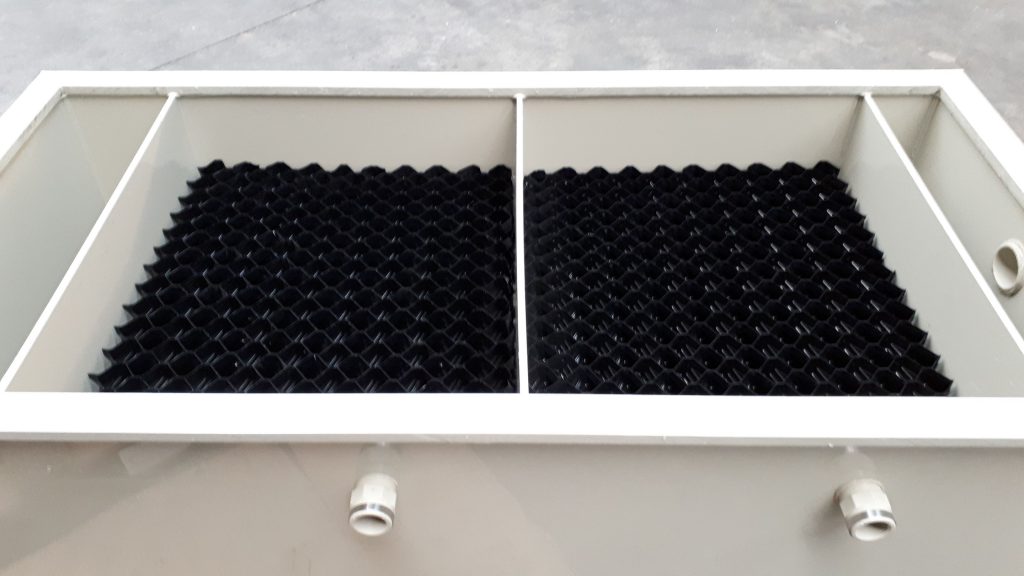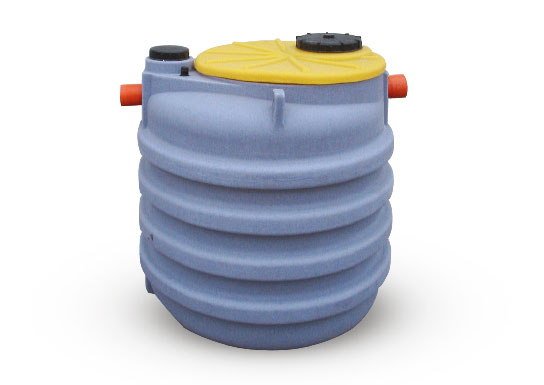The reed valve pack de-oiling is used in galvanic to obtain the cleaning of chemical baths such as anodic degreasing and cathodic degreasing, for the treatment of oily emulsions of phosphodegreasing baths, acid pickling and various degreasing.
These chemical baths are often polluted by oils and sedimentable solids.
The oil removers find an application as they guarantee the effective removal of the oil, improve the working process, keep it stable and extend the working life of the baths.
The process is a recycling process, the chemical solutions of the galvanic baths are sent to the oil separator, and completely recovered, this de-oiling system consists of a polypropylene tank with a series of bulkheads necessary to slow down the flows, the degreasing or the bath that is treated, is conveyed at a precise flow rate through the lamellar packs, in this area the flow is confined in single channels of ascent. The oil droplets have time to agglomerate with each other and rise to the surface to store the oil in a calm zone.
The collected and confined oil can be extracted and the oil bath de-oiled, through an electric pump, is sent again to the processing tank.
Applications of the oil separator for Galvanic :
- Oil separation from sulphuric pickling solutions
- Degreasing baths de-oiling in the galvanic field
- Cleaning and maintenance of oily emulsions
- De-oiling of acidic solutions with pickling hydrochloric solutions
- Oil de-oiling upstream of wastewater to be treated with water purification plant
The main advantages of using galvanic oil separators are:
- Reduced overall dimensions
- Easy cleaning
- No maintenance and no need for staff supervision
- High oil removal efficiency
- Stable and non-degressive manufacturing process
- Much higher chemical bath performance
- Decrease in disposals
- Low costs



